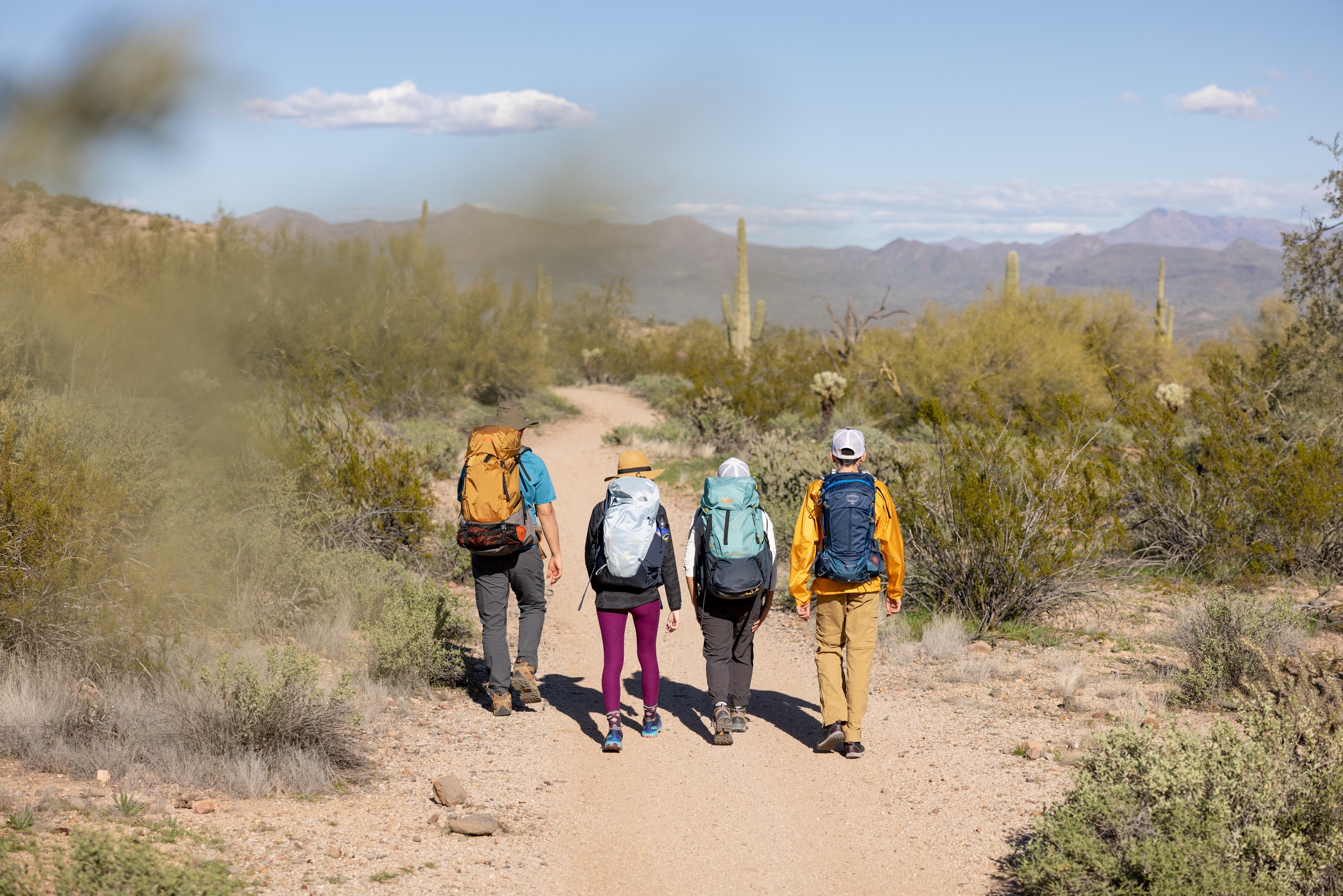When it comes to finding the perfect-for-you pair of hiking pants, there are many factors to consider, including the type of hiking you’ll be doing, the conditions on the trail, how you generally like your pants to fit and what special features you prefer.
Donna Bruns, global product director at Fjallraven, puts it another way: "Do you want something super gnarly?" she asks, referring to rugged, technical bottoms. "Do you like a lot of pockets? Is comfort important to you?" Bruns says comfort means different things to different people depending on a variety of factors, including body type.
To help you identify the best hiking pants for you, we spoke with experts like Bruns and Lissa Pooley, men’s bottoms designer at KUHL, to get their insight and tips for choosing the best pants for your next outdoor adventure. We cover:
- Types of hiking pants
- Hiking pants materials
- Hiking pants fit
- Special features
- Hiking pants for specific conditions
- Other considerations
To learn more about REI Co-op Member and staff-favorite hiking pants, read our Best Hiking Pants: Staff Picks gear guide.
Types of Hiking Pants
Hiking pants come in a variety of styles. Some are designed to be suitable for a wider range of conditions and hiking scenarios, while others excel in a niche environment or for a specific activity.
Traditional hiking pants: Feature a straight or slightly wide silhouette in the leg, designed for movement and breathability.
Convertible hiking pants: These versatile hiking bottoms can be worn full-length or as shorts, thanks to a removable lower-leg portion.
Leggings/tights: Made from synthetic and natural fibers, these sit flush against your skin, which can help prevent chafing. They are designed for comfort and ease of movement, and thanks to recent innovations in material science, they can also be highly durable. Related reading: Hiking in Leggings and Yoga Pants
Joggers: These pants are a kind of hybrid between sweatpants and traditional pants, made from lightweight, stretchy fabrics with an elastic waistband and tapered or cinched elastic cuffs.
Mountaineering/alpine hiking pants: Highly technical pants that prioritize freedom of movement, with features like cinch points at the cuffs, reinforced areas and extra ventilation points. They typically cut a slightly slimmer silhouette to prevent potentially dangerous snags and scrapes and ensure the wearer has a clean line of sight to their feet.
Jeans: Most hiking guides steer clear of cotton pants like jeans, but performance denim designed for the trail is usually made with a higher percentage of synthetic materials like polyester or elastane to ensure sufficient stretch.
Water-resistant hiking pants and rain pants: While both keep your legs dry, water-resistant hiking pants feature a breathable durable water repellent (DWR) or wax coating that sheds water while allowing for air permeability (and moisture penetration in heavy rain). Waterproof rain pants are made with a non-water-permeable fabric and usually have sealed seams, which will keep your lower half dry in a downpour at the expense of breathability.
Insulated hiking pants: Designed for more leisurely outings in cold temperatures, these bottoms feature extra insulation to help the wearer hold in their body heat.
Hiking shorts: Nearly all varieties of hiking pants listed above are available in knee-length or shorter versions.
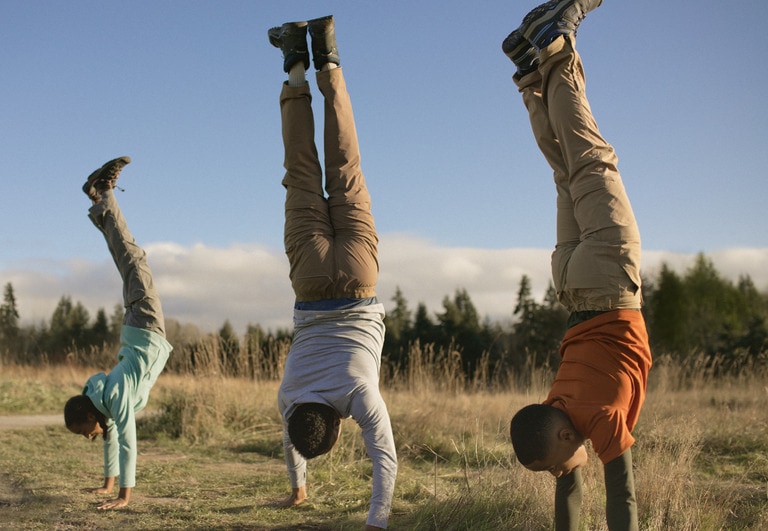
Hiking Pants Materials
Materials can impact hiking pants' core function, comfort, weight, drape and more. Brands often utilize multiple materials, including blending synthetics with natural fibers, to harness each material’s key benefits.
Synthetics
Human-made or manufactured fibers "have taken the industry by storm," and are what you’re more likely to see in a hiking pant, says Lissa Pooley, men’s bottoms designer at KUHL. The reason: Synthetics offer technical benefits like wind-, water- and abrasion-resistance. They’re also more breathable, lighter weight and faster-drying than cotton, and hold their dye colors better. On the other hand, synthetics are typically derived from petroleum-based chemicals and petrochemicals, can shed microplastics when washed and aren’t biodegradable. Some people dislike how synthetic materials feel next to their skin.
Polyester: This affordable material offers mechanical stretch, meaning it’s flexible without the addition of elastic fibers. Polyester is less abrasion-resistant than other synthetics, but it doesn’t wrinkle. It may be blended with other synthetics (often spandex) to become even stretchier.
Nylon: A more-durable synthetic material known for its abrasion-resistance and tear strength, but it’s not inherently stretchy. It may be blended with other synthetics to add stretch.
Spandex: This non-trademarked term is an anagram of "expands" and long known for its elasticity. It’s often found in form-fitting bottoms (e.g. tights, leggings) or to give other hiking pants extra stretch, but washing or drying with heat can cause it to lose shape and stretchiness. Spandex is less breathable than other fabrics and can trap odor, and is prone to snagging on rough and sharp surfaces.
Natural fibers
As the name implies, these are found in fiber form in nature, originating from animal, plant or mineral resources and are renewable, sustainable and biodegradable materials.
Cotton: This breathable, abrasion-resistant plant-based fabric is the most likely to appear in your hiking pants. As with your favorite jeans, cotton hiking pants will loosen up when you wear them. Cotton’s heavier material and highly absorbent (just think of 100% cotton towels) means it's slower to dry.
Hemp: Hemp is a renewable natural material that can boost hiking pants’ durability, but it has a rougher texture (though it softens over time) and doesn’t stretch.
Bamboo and other cellulose-based fibers: While super soft, lightweight and breathable, these materials also tend to create a drapey silhouette. They’re less suitable for hiking pants with a more structured aesthetic.
Wool: This natural resource most commonly derived from sheep has many benefits, especially superfine merino wool. It’s soft, stretchy and moisture wicking, as well as being odor-, stain- and static-resistant. Merino is typically used in base layers, socks and liner gloves but may show up in the next-to-skin side of a heavier-weight, winterized hiking pant.
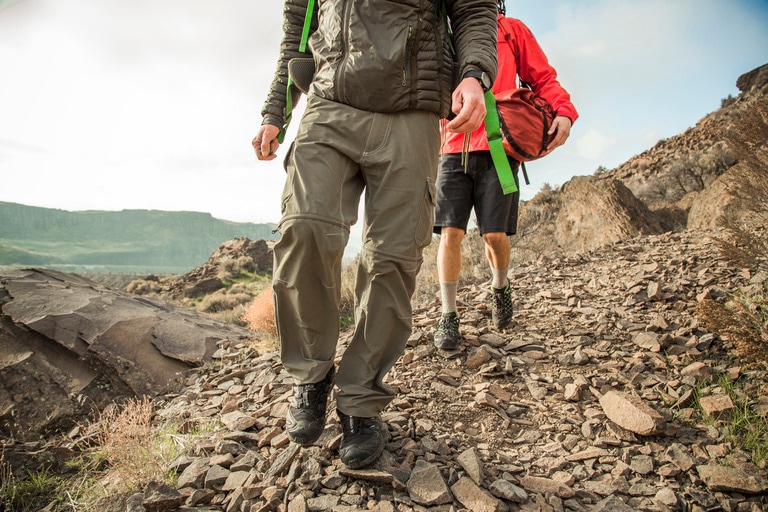
Hiking Pants Fit
Hiking pants generally come in four standard silhouettes, though some brands have even more fits within these categories.
Full or wider leg: This is a baggier silhouette that fits loosely throughout the thighs, knees and calves.
Classic or straight leg: Neither baggy nor slim, hiking pants with classic or straight leg silhouette have a generally consistent width from top to bottom.
Tapered or slim fit: These silhouettes are tighter to the leg. Tapered silhouettes start wider near the waist and gradually narrow toward the ankle, while slim silhouettes are narrow from top to bottom.
Tights: Tights fit snug against the skin at all points.
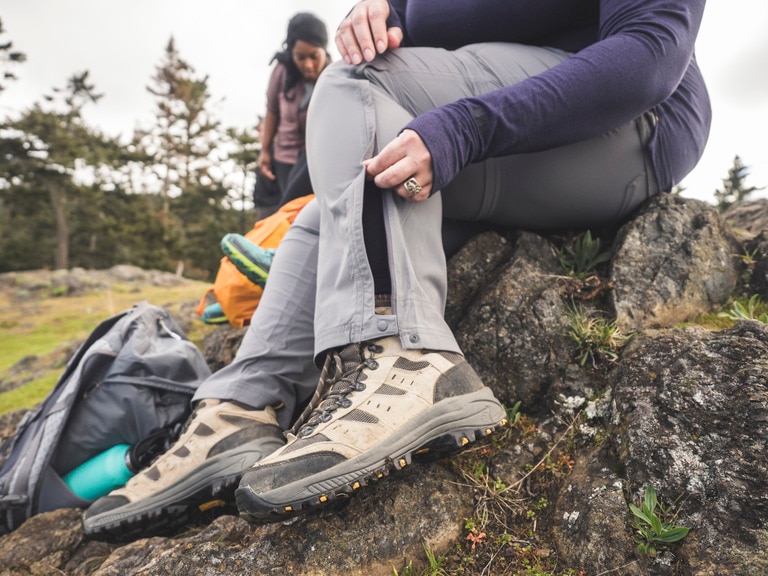
Hiking Pants Features
Here’s an overview of the additional elements you’re most likely to find in hiking pants, and how they can benefit your outdoor experience.
Stretch: Since hiking often involves high stepping over rocks and roots, many hiking pants feature some stretch to facilitate ease of movement. Stretch will also make the pants less rigid and likely more comfortable. It can come in the form of an inherently stretchy fiber or through the weaving process. (See Hiking Pants Materials above for more about stretch fabrics.)
Moisture wicking: Wicking fabrics quickly move moisture (namely, sweat) to the outer surface while also drying quickly—as opposed to water-resistant materials, which block moisture from seeping into the fabric. Related reading: What Does Moisture-Wicking Mean?
Pockets: Though hikers generally carry a pack for hauling most gear (including the Ten Essentials), your hiking pants’ pockets can help carry items you want to have accessible: e.g. pocket knife, compass, headlamp or snack. Zippered pockets can keep can’t-lose items like phone or wallet secure.
Pants closure: More traditional and technical hiking pants and shorts are likely to have a standard button-plus-zipper fly system or a drawcord. Joggers may have a drawcord or elastic waistband, while leggings/tights often have a simple pull-on system. Some pants pair different closing mechanisms, like a button-plus-zipper fly with a hidden, inner drawcord.
Gusset: A diamond-shape piece of fabric that runs between the legs up to the crotch, boosting mobility and durability by redistributing the stress points over multiple seams.
Knee darts: Folds sewn above and below the knee to allow more space for the joint to bend. Knee darts can facilitate movement in hiking pants made from less-stretchy material like cotton.
Vent system: Any feature allowing quick release of built-up body heat. Some vents have a thin or mesh fabric barrier to prevent bugs and dirt from getting inside the pants.
Cuff system: For moving through overgrown areas or scrambling over rocks, choose hiking pants with a cuff cinch system, likely a snap or bungee cord closure mechanism: This both prevents debris and bugs from entering and allows a clear sight line to your foot, aiding placement and stability. Find a pair with a vertical zipper on the bottom cuff if you need/want to take the pants off without removing your shoes.
Roll-up/removable legs: Pants that allow you to shorten or remove their lower leg portion are handy in variable weather conditions (for example, cool in the morning then hot during the day) and variable trail conditions (such as transitioning from deep woods to water crossings).
Odor control: Some materials, like merino wool and fabric with added silver or antimicrobial chemicals, are more odor-resistant than others, and stand up to multiday use. Odor control properties may reduce over time. Continue to keep the stink at bay by applying odor eliminating spray.
Insect repellent: Clothing that has been treated with insect-repellent coatings can keep pests off, but it may become less effective after several washes. Re-up the protection by applying garment-safe insect-repellent treatment.
Ultraviolet Protection Factor (UPF): Clothing with this rating is designed to protect you from harmful UV rays. A higher UPF rating provides better sun protection. Related reading: How to Choose Sun Protection (UPF) Clothing
Wrinkle-resistance: Most hiking pants’ materials aren’t prone to creasing, notes Fjallraven designer Bruns. That said, "if you don’t want something to wrinkle, wear tights," she laughs. "They’re definitely not going to wrinkle."
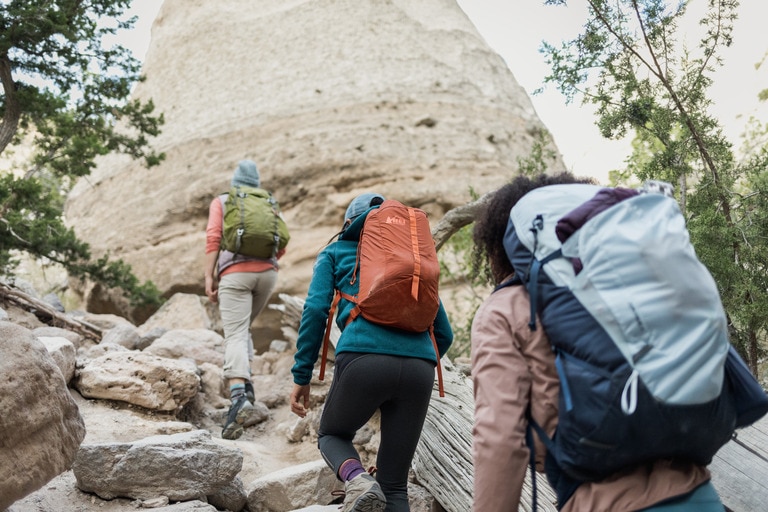
Hiking Pants for Specific Conditions
To choose among the vast assortment of hiking pants available at the co-op, first assess your hiking environment. "Is it going to be wet?" asks Fjallraven designer Bruns. "Is it going to be cold? Is it going to be dry? Is it going to be hot and wet? Those are really important questions. If you have 10 trousers you’re choosing from, that will narrow it down quickly."
Hot and dry: Opt for lighter weight hiking pants made of breathable materials in looser silhouettes. "What you need is airflow," Bruns says, "because that keeps you cool and comfortable, and it reduces the likelihood of chafing." Prioritize pants in lighter colors, which absorb less heat. Related reading: Hot-Weather Hiking Tips
Hot and wet: In hot and humid environments, decide whether you want to try to stay dry or you don’t mind getting soggy. For shorter treks or passing rain, choose seam-sealed waterproof pants. For longer hikes or consistent rain/downpour, consider embracing the inevitable: You’re going to be wet. As long as your body temperature remains comfortable (either from warm weather or because you’re working hard enough), and you’re not at risk of getting cold, a pair of lightweight, synthetic hiking pants is your best bet. Apply some anti-chafing balm for good measure. Related reading: How to Go Hiking in the Rain
Cold and dry: Choose a relaxed-fitting pair of hiking pants and, if it’s cold enough, wear them over a base layer. "You need space between your clothes and your skin or base layer because that’s where the heat is," says Stockholm-based Fjallraven designer Bruns. When conditions are dry or too cold for snow to melt, choose quick-drying synthetic and wool layers that wick perspiration from skin. Having a waterproof layer isn’t necessary. In fact, exerting yourself and sweating in a non-breathable, waterproof layer can put you in danger, since your sweat will make you cold once your activity level slows. Related reading: Cold-Weather Hiking Tips
Cold and wet: You’ll still want a looser pair of hiking pants to allow for your body to build up heat between your skin and the fabric, but reach for something waterproof. Consider wearing a quick-drying base layer under the hiking pants.
Variable: When moving through unpredictable or variable weather conditions, such as when gaining significant elevation, it’s best to wear hiking pants appropriate for the current conditions and add an extra layer to your pack just in case.
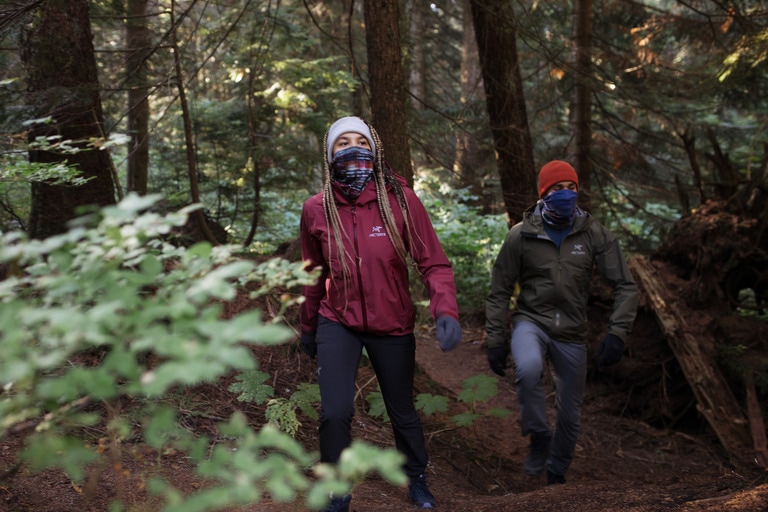
Other Considerations
Here are some tips to help you find the best pair of hiking pants for your body and your hike.
Try on different sizes. Start by trying your typical size, keeping in mind that you might need something different depending on the silhouette, material and closure style. For example, size down with a stretchier synthetic material or up with a more rigid cotton (though not denim, which tends to become looser with wear). Always factor in how comfortable the pants feel overall, as well as the type of hiking you expect to do.
Test them out. "Take a moment to move around the store," suggests KUHL designer Pooley. "Even sitting down or doing a quick squat can help you assess how the garment moves with your body." For online shopping, consider ordering two sizes and returning the one that doesn’t fit.
Take them off. Don't forget to evaluate how easily you can pull on and off your bottoms in case you need to relieve yourself while on the trail. Tighter pants like hiking tights may also cling to your legs when you get sweaty or wet, which can make them difficult to get out of when nature calls.
Anticipate your activity level. Consider how fast or slow you’ll be moving, how much of the hike is uphill and whether your body will generate excess heat. If you expect to sweat, look for lightweight, breathable materials and/or a vent system.
Be aware of wildlife and insects you might encounter on the trail. Sometimes, your choice of hiking pants can protect you from injury or illness. For example, when hiking in rattlesnake country, choose looser-fitting bottoms made from thicker material, which can keep a strike from reaching your skin. Lighter-color garments can help you spot crawling ticks.
Consider the waistband and closure. What will be most compatible with your carrying system? What will reduce the likelihood of painful chafing? Will looser closure mechanisms like a drawcord or pull-on system feel secure enough for your purposes? For longer, multiday outings, consider whether your pants’ material will loosen up. If you might lose weight and change pants sizes during the trip, decide if you want to bring a belt or if a drawcord would serve you best.
Factor in your pack. If you’ll be hiking with a backpack or waist pack, make sure your pants’ belt loops and other waistband features are compatible with the pack’s hipbelt: This can prevent rubbing or chafing. Ideally, try on your pack with some weight in it (you can throw in a bag of rice, Pooley says) to see how compatible it is with the waistband.
Weigh your options. For multiday treks in particular, you'll need to keep in mind how much extra heft you can tolerate in your pack while bringing along the clothes you need. For example, while shorts and tights are lighter and take up less space, they aren't the most appropriate options for scrambling or technical hikes. On the other hand, some bulkier hiking pants are best saved for day hikes. Find the combination of features that works best for your journey.
Consider multiuse pants. Do you plan to have a single go-to pair of hiking bottoms? If so, look for a pair that will serve you in a variety of conditions and adventure types: both warm and cool days, in rain or shine, for high-exertion and less intense outings, etc. If you expect to invest in multiple pairs of hiking pants, consider shopping for specialized functionalities.
Be open to something new. "If you discover a brand that feels great on your body, explore some of their other styles and fits," Pooley advises. "There might be a new version with features and/or fabrics you hadn't considered before. It’s always worth checking out the latest variations."
